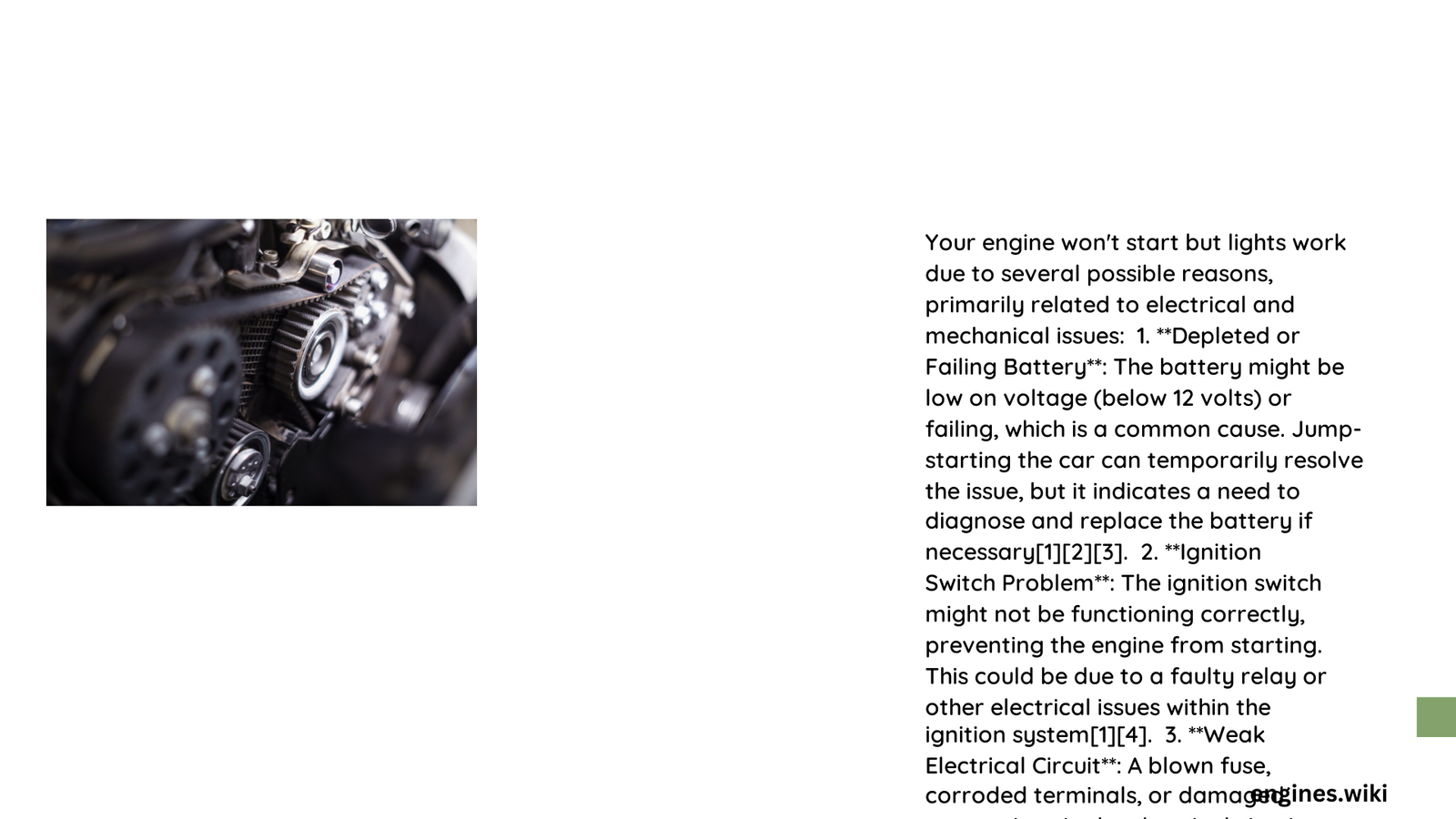When your vehicle’s lights work perfectly, but the engine refuses to start, it signals a complex mechanical or electrical issue that requires systematic investigation. This frustrating scenario often stems from multiple potential problems ranging from battery complications to starter motor failures, fuel system blockages, or intricate electrical system malfunctions. Understanding the precise diagnostic steps can help you quickly identify and resolve the underlying cause, potentially saving significant time and repair costs.
What Causes Engine Failure When Lights Remain Operational?
Can Battery Voltage Prevent Engine Start?
Battery issues are a primary suspect when an engine won’t start. Here’s a detailed breakdown:
Battery Voltage Diagnostic Checklist:
- Voltage Range: 12.5-12.7 volts indicates a healthy battery
- Low Voltage Warning Signs:
- Dimming dashboard lights
- Slow cranking
- Inconsistent electrical performance
| Battery Condition | Voltage Reading | Potential Action |
|---|---|---|
| Fully Charged | 12.6-12.7V | No Immediate Action |
| Marginal | 12.4-12.5V | Consider Charging |
| Critically Low | Below 12.4V | Replace Battery |
How Do Starter Motor Problems Impact Engine Start?
Starter motor complications can prevent engine cranking despite functional lights:
Starter Motor Diagnostic Indicators:
- Clicking Sounds: Rapid clicking suggests insufficient power transmission
- No Cranking: Complete silence indicates potential starter motor failure
- Intermittent Starting: Suggests worn starter components
What Role Do Electrical Connections Play?
Electrical connection issues can disrupt the starting process:
- Terminal Corrosion Check
- Inspect battery terminals for white/green corrosive buildup
- Clean terminals using wire brush
-
Ensure tight, secure connections
-
Ground Connection Verification
- Check ground straps for damage
- Verify solid metal-to-metal contact
- Look for signs of oxidation or wear
Can Fuel System Problems Prevent Engine Start?
Fuel delivery issues can block engine startup:
Fuel System Diagnostic Steps:
- Fuel Pressure Test
- Normal pressure range: 30-50 PSI
- Use professional fuel pressure gauge
- Fuel Pump Functionality
- Listen for humming sound when key turns
- Check electrical connections
- Verify pump motor operation
What Are Potential Repair Costs?
Estimated repair costs for different scenarios:
| Component | Diagnostic Cost | Replacement Cost | Estimated Time |
|---|---|---|---|
| Battery | $20-$50 | $50-$200 | 1-2 hours |
| Starter Motor | $50-$100 | $200-$500 | 2-3 hours |
| Fuel Pump | $50-$100 | $300-$1000 | 3-5 hours |
Recommended Troubleshooting Approach
- Perform comprehensive battery voltage test
- Check starter motor electrical connections
- Verify fuel system pressure
- Inspect ground connections
- Consider professional diagnostic service if issues persist
Professional Recommendations
- Always use quality diagnostic tools
- Follow manufacturer-specific guidelines
- Don’t ignore repeated starting problems
- Regular maintenance prevents unexpected failures
Warning Signs Requiring Immediate Attention
- Persistent clicking sounds
- Complete electrical system failure
- Intermittent starting issues
- Unusual burning smells
Conclusion

Diagnosing why an engine won’t start while lights work requires methodical investigation. By understanding potential causes and following systematic diagnostic steps, you can efficiently resolve most starting issues.
